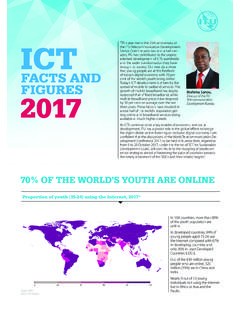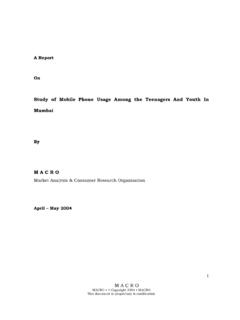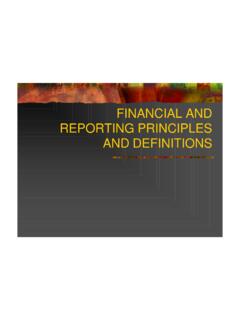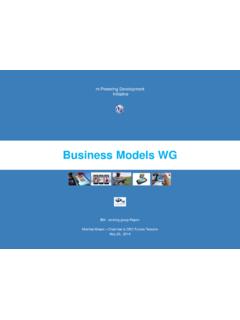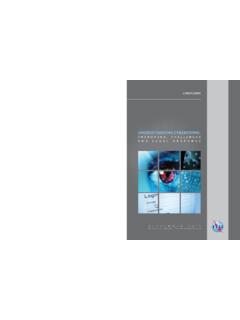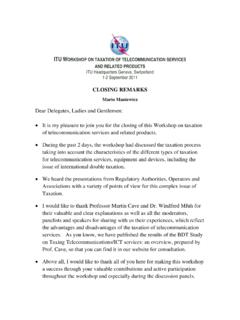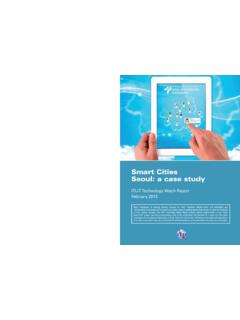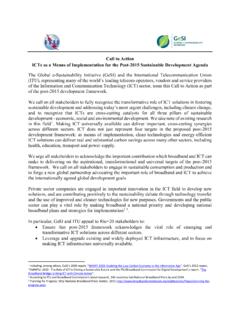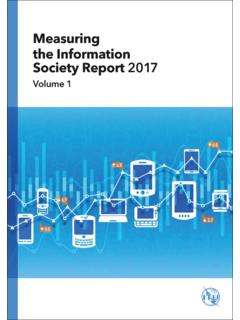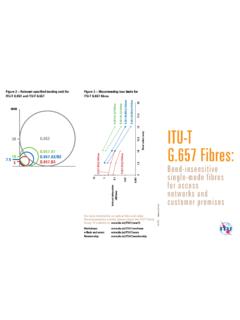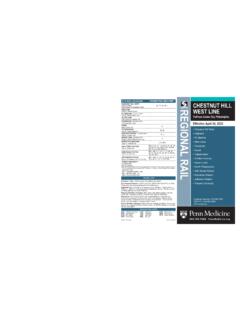Transcription of Zimbabwe Meteorological Services Department - ITU
1 Zimbabwe Meteorological Services Department Climate Issues and Facts: Zimbabwe Chamunoda Zambuko (Meteorologist). Email: OUTLINE. INTRODUCTION. Weather and Climate- Definitions Zimbabwe Climate Factors controlling Weather & Climate Weather related Hazards Climate Change facts- Zimbabwe . Weather vs Climate Weather is the state of the atmosphere at a given time and place. The atmospheric parameters include temperature, humidity, precipitation, cloudiness, wind, and barometric pressure. In contrast to weather, Climate is the set of Meteorological conditions that prevail in a particular place or region over a long period of time.
2 Climate can vary over broad time scales, from years to millennia. Climate is the long-term statistical expression of short- term weather. Zimbabwe Climate Hot Season - mid-August to mid- November (hot day time T C 26 C to 36 C). Main rainy season - mid-November to mid- March (intercepted by 4 to 5 dry spells). Cool season - mid-May to mid-August (mild day time T C 20 C to 29 C). Post rainy season - mid-March to mid-May (mild and sunny, 23 C to 31 C). Factors controlling climate Latitude which determines the amount of radiation received at any time of the year.
3 Position in relation to land, sea and ocean Altitude which greatly influences temperature General circulation of the atmosphere and its perturbations. Nature of the underlying surface; soil type, water Vegetation cover Topographical features ITCZ . December/January/February Guti'. This is a cool moist southeasterly airflow which causes cloudy conditions. If this condition becomes well established it results in widespread drizzle and rain in places. In summer if a guti sets in, it results in convergence;. hence increasing rain and thunder activity in the country if conditions allow.
4 Severe guti may push crucial rainfall activity out of the country and drier weather will be experienced over whole country. Main rain months Zimbabwe Average Monthly Rainfall in mm (1980/81 to 2009/10). 180. 160. 140. 120. 100. 80. 60. 40. 20. 0. Jul Aug Sep Oct Nov Dec Jan Feb Mar Apr May Jun 2010/11 Rain Season Onset A start of the rain season is attained when a place receives 20 mm in 1 or 2. days and there is no dry spell of more than 10 days expected in the following 30 days. All dates for 2010/11 season onsets fell in November. The scale on the side of the map shows the days of the month from the 1st (bottom) to the 30th (top).
5 Rainfall Amts Vs Latitude Zimbabwe Mean Annual Rainfall R/fall amts Vs Altitude Zimbabwe Rainfall Distribution by Altitude 250 450 650 850 1050 1250 1450 1650 1850. ALTITUDE (METRES ABOVE MEAN SEA LEVEL). Zimbabwe 's hottest & warm areas ( ). Zimbabwe 's coldest and warm areas ( ). Weather related Hazards Tropical cyclones Floods and flash flooding Drought and intra season dry spells Thunderstorms and lightning Hail storms Heavy rains Ground frost Heat Waves Prediction of met hazards Biggest challenge is the prognosis lead time. Thunderstorms, lighting and hailstorms.
6 Hours to 1 day. Ground frost 3 days to 1 week. Tropical cyclones 1 week Heavy rains and floods 3 days to 2 weeks. Dry spells 2 weeks. Meteorological Drought 3 months Heavy rainfall A rainfall measurement of more than 100mm in 24. hours is regarded as a severe weather event. Usually associated with mesoscale severe convection or the passage of a tropical cyclone. Fortunately, Madagascar acts as a deviator of more than 95% of tropical cyclones from the South West Indian Ocean. Lightning and hailstorms A result of very high convective available potential energy high temperatures.
7 Usually occur during the first half of the season or after some days clear skies and very high temperatures. Highland areas are prone to lightning those that lie along the main watershed. Hailstorm damage in 2009/10. Two people were killed in Dotito 51 homesteads destroyed in Muzarabani Three schools destroyed in Mhondoro Hundreds of hectors of tobacco destroyed in Magunje. HAILSTORM: One of schools destroyed in Mhondoro Hailstorm damage in 2009/10. - economic impacts Hundreds of hectors of tobacco destroyed in Magunje. PLEASE. INSURE. YOUR. CROP! Hailstorm Homestead destroyed in Muzarabani Weather and Climate Factors controlling Weather Zimbabwe Climate Weather related Hazards Climate Change facts- Zimbabwe .
8 What is Climate Change? Climate change is any long-term significant permanent change in the average weather of a given area/ region. Average weather may include average temperature, precipitation, wind and pressure patterns. It involves changes in the average state of the atmosphere over duration ranging from decades to millions of years. IS THE CLIMATE OF Zimbabwe . CHANGING? YES. IS THERE ENOUGH EVIDENCE TO. SUPPORT THAT? YES. Why is it changing? Both Nature and Human activities cause the Change UNFCCC (1992) attributed the change to human activities which alter the composition of the global atmosphere.
9 Main Human activities Industrial Revolution in Europe. Rapid increase in greenhouse gas emissions Increase in population growth Increased deforestation and landuse Increased atmospheric aerosols Need to increase agricultural production Climate change/variability? The difference Climate change refers to statistically significant variation in either the mean state of the climate or its variability persisting over extended periods (typically decades or longer). Climate variability refers to variations in the mean state and other statistics (standard deviation, occurrence of extremes) of the climate on all temporal and spatial scales.
10 Annual Mean Maximum T C (Daytime Temps). Zimbabwe : temperature and rainfall extremes The temperature analysis shows a distinct trend towards higher temperature. Positive trends can be detected for the temperature time series in Zimbabwe from 1962 to 2004. Both annual min and max temps are showing an increasing trend. Annual average max and min air temperature has increased by around 2 degrees Celsius respectively during the past 100 years Annual Mean Night Temperatures Temperature and rainfall extremes Cont . There is a trend towards decreasing number of cold days.
